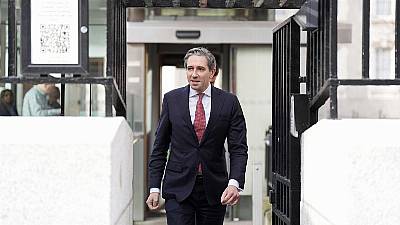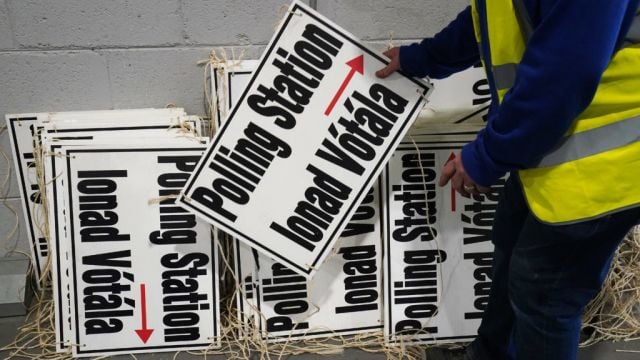The next general election will be held on November 29th, Taoiseach Simon Harris has said.
Mr Harris will travel to Áras an Uachtaráin on Friday, the official residence of the President, to seek the dissolution of the Dáil.
The highly-anticipated announcement will formally kick off a truncated campaign which will last mere weeks.
It cuts the sitting of the Dáil just months shy of its full five-year maximum term – and comes after the Government progressed legislation it had identified as priorities to conclude following October’s Budget.
The upcoming election brings to an end the historic coalition which was formed in mid-2020, bringing together Fine Gael and Fianna Fáil in an agreement which ended a rivalry dating back to the Civil War.
The talks to form a Government were carried out over five months, influenced by the onset of the Covid-19 pandemic.

Joining with the Greens to hold a majority in the Dáil, ministries were divided across the parties and an agreement for a “rotating taoiseach” was formed.
It saw Fianna Fáil leader Micheál Martin taking the top role for the first half of the lifetime of the Government, later replaced by then-Fine Gael leader Leo Varadkar.
Mr Harris became Taoiseach earlier this year after Mr Varadkar decided to step away from his stewardship of the party.
The lifetime of the Government has been characterised by its response to several challenges, from the handling of the Covid-19 pandemic, the cost-of-living crisis, the inability to accommodate rising numbers of asylum seekers and compounding pressures in housing – including record levels of homelessness.
More recently, the Government has faced criticism for its public spending after it emerged €336,000 had been spent on a bike shed at the parliament, on top of other issues such as the spiralling cost of a multibillion-euro children’s hospital in Dublin.
It also suffered a knock when referendums it put forward were overwhelmingly rejected by the public in early 2024.
However, Government figures hail a range of measures for families including reducing the cost of childcare, the introduction of hot school meals and free school books as key policies.
They also point to efforts to accommodate of more than 100,000 people fleeing the war in Ukraine and the overall management of the public purse as among its successes.
Elsewhere, senior ministers are proud of the coalition’s record on increasing housing delivery and the recognition of Palestinian statehood amid Israel’s war in Gaza. However, detractors feel that the scale of Government action in these areas was insufficient.
The election comes shortly after what was characterised as a “giveaway Budget”, which included additional child benefit, pension, and other social welfare payments occurring before polling day.
The results of the last election left Fianna Fáil with a narrow seat lead ahead of Sinn Féin and Fine Gael. Sinn Féin had the highest percentage of first-preference votes, but came in second ahead of Fine Gael.
It was seen as both a monumentally successful result for Sinn Féin, the largest opposition party, and among the worst performances for the other two major parties.

At the time, Sinn Féin leader Mary Lou McDonald faced criticism for not running more candidates which would have capitalised on its large share of first-preference votes.
Since then, Sinn Féin has admitted that it achieved worse-than-expected results in local and European elections in the Republic of Ireland – which took place earlier this year.
The challenge for the Government parties, particularly Fine Gael and Fianna Fáil, will be putting forward a convincing message on policies that distinguishes them from their erstwhile colleagues.
However, members of the coalition will be buoyed by a string of controversies that have beset Sinn Féin in recent weeks.
Ms McDonald addressed the Dáil on a series of scandals, including former party members writing job references for a colleague who was later convicted of child sex crimes.

In the election, Ireland will choose more TDs than ever before.
It comes after a recommendation to increase the number of TDs from 160 to 174 to account for a boom in the population. The number of constituencies has increased from 39 to 43.
After polling day, the protracted process of counting ballots by hand will begin. As the State uses a system of proportional representation, the voting slips need to be counted several times – an undertaking which can last for days.







